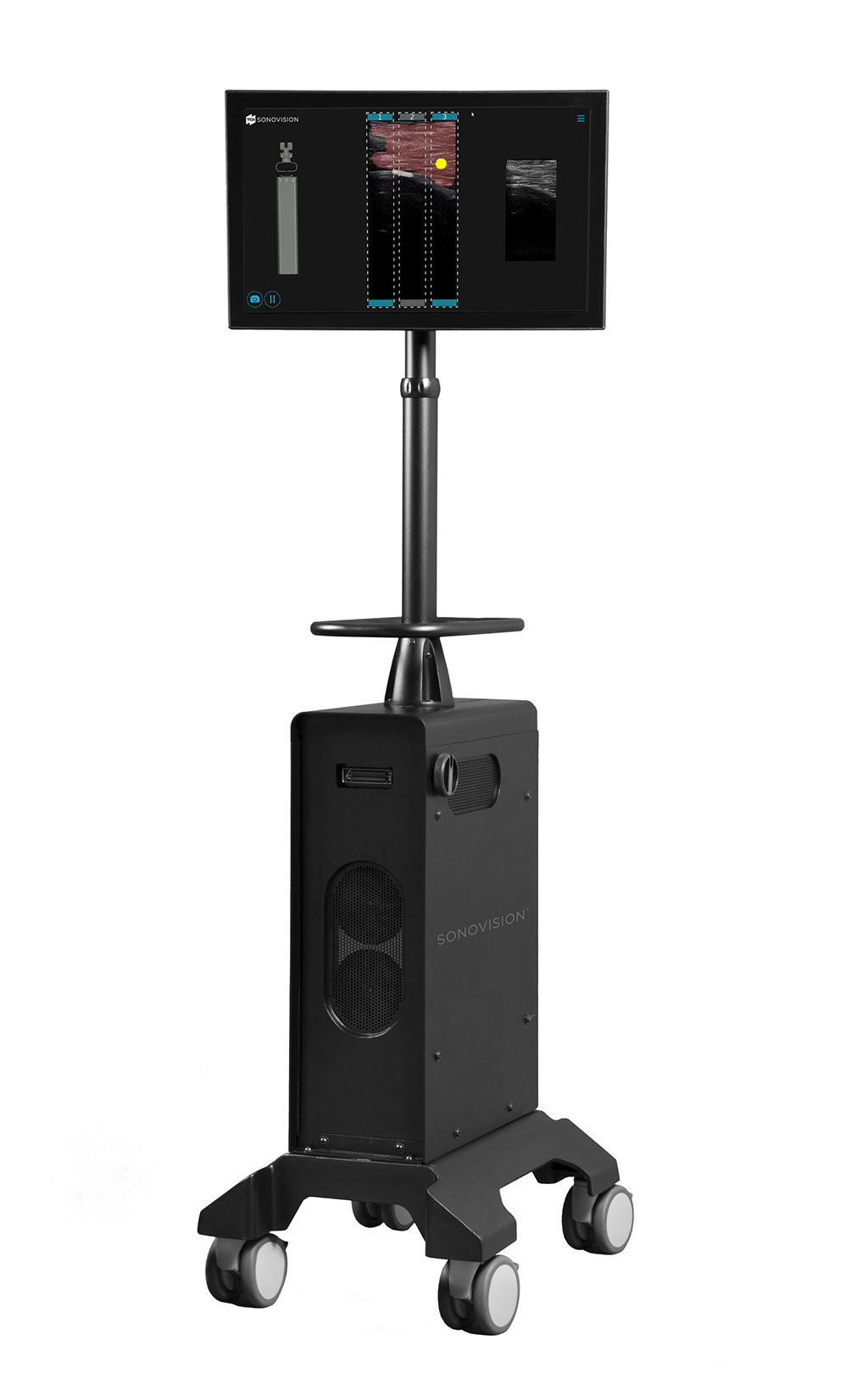AI Enabled Ultrasound Device Advances Spine Surgery
By MedImaging International staff writers
Posted on 29 Apr 2020
An innovative real-time surgical ultrasound imaging platform provides intraoperative imaging assistance in spinal procedure applications. Posted on 29 Apr 2020
The Tissue Differentiation Intelligence (TDi; Delray Beach; FL. USA) SonoVision ultrasound imaging system is intended for visualization and evaluation of bones, nerves, vascular, and other anatomical structures using the Beluga1 10 MHz transducer probe, an ergonomically designed probe developed specifically for spinal procedures. The system includes image processing software used to define anatomical features in an ultrasound B-mode image. By applying layers of image-processing algorithms to the images collected intraoperatively, it can then differentiate nerve, muscle, bone, and vessels in real time.

Image: The SonoVision ultrasound imaging system (Photo courtesy of TDi).
Features include Doppler echographic imaging and non-user adjustable acoustic output; intuitive color flow mapping of nerve, muscle, and bone; real-time 2D bone and tissue scanning and differentiation; internal function radiofrequency (RF) energy, resulting in very low RF emissions; proprietary imaging software, data capture, and external storage; and electrical safety, acoustic output, and electromagnetic compatibility that meet international standards. An in-vivo porcine study validated the accuracy of SonoVision in identifying the presence and absence of nerves within specimen psoas tissue.
“TDi ushers in a new era of innovations related to soft tissue imaging in spine surgery, and really, the beginning of a much broader trend of artificial intelligence and machine learning being applied to satisfy challenging clinical requirements in spine surgery,” said Alex Lukianov, Chairman and CEO of TDi, following recent U.S. Food and Drug Administration (FDA) clearance. “FDA clearance paves the way for ultrasound to be used as a new imaging modality for spine surgery by overcoming the impracticalities of conventional ultrasound.”
Deep learning is part of a broader family of AI machine learning methods based on data representations, as opposed to task specific algorithms. It involves neural network algorithms that use a cascade of many layers of nonlinear processing units for feature extraction and transformation, with each successive layer using the output from the previous layer as input to form a hierarchical representation.
Related Links:
Tissue Differentiation Intelligence














